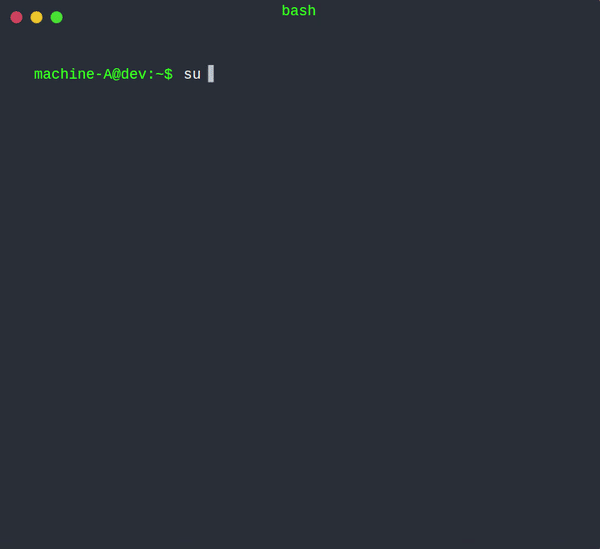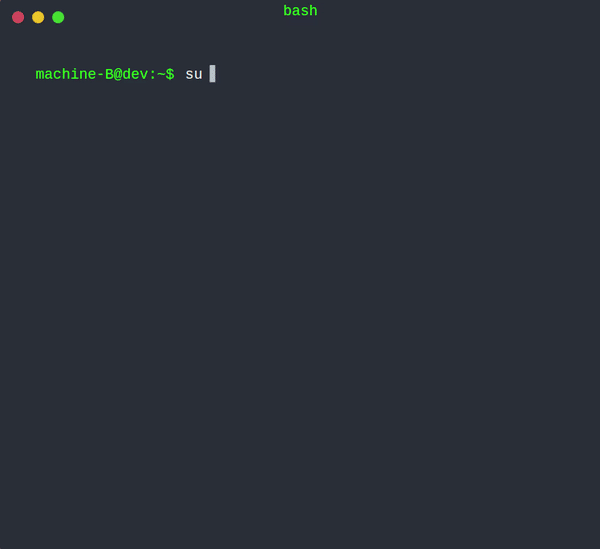Start using Wiretrustee at app.wiretrustee.com
See Documentation
Join our Slack channel
Wiretrustee is an open-source VPN platform built on top of WireGuard® making it easy to create secure private networks for your organization or home.
It requires zero configuration effort leaving behind the hassle of opening ports, complex firewall rules, VPN gateways, and so forth.
Wiretrustee automates Wireguard-based networks, offering a management layer with:
- Centralized Peer IP management with a UI dashboard.
- Encrypted peer-to-peet connections without a centralized VPN gateway.
- Automatic Peer discovery and configuration.
- UDP hole punching to establish peer-to-peer connections behind NAT, firewall, and without a public static IP.
- Connection relay fallback in case a peer-to-peer connection is not possible.
- Multitenancy (coming soon).
- Client application SSO with MFA (coming soon).
- Access Controls (coming soon).
- Activity Monitoring (coming soon).
- Private DNS (coming soon)
Note: The main branch may be in an unstable or even broken state during development. For stable versions, see releases.
Hosted demo version: https://app.wiretrustee.com/.
- Wiretrustee features a Management Service that offers peer IP management and network updates distribution (e.g. when a new peer joins the network).
- Wiretrustee uses WebRTC ICE implemented in pion/ice library to discover connection candidates when establishing a peer-to-peer connection between devices.
- Peers negotiate connection through Signal Service.
- Signal Service uses public Wireguard keys to route messages between peers. Contents of the messages sent between peers through the signaling server are encrypted with Wireguard keys, making it impossible to inspect them.
- Occasionally, the NAT traversal is unsuccessful due to strict NATs (e.g. mobile carrier-grade NAT). When this occurs the system falls back to the relay server (TURN), and a secure Wireguard tunnel is established via the TURN server. Coturn is the one that has been successfully used for STUN and TURN in Wiretrustee setups.
APT/Debian
- Add the repository:
sudo apt-get update sudo apt-get install ca-certificates curl gnupg -y curl -L https://pkgs.wiretrustee.com/debian/public.key | sudo apt-key add - echo 'deb https://pkgs.wiretrustee.com/debian stable main' | sudo tee /etc/apt/sources.list.d/wiretrustee.list
- Install the package
sudo apt-get update sudo apt-get install wiretrustee
RPM/Red hat
- Add the repository:
cat <<EOF | sudo tee /etc/yum.repos.d/wiretrustee.repo [Wiretrustee] name=Wiretrustee baseurl=https://pkgs.wiretrustee.com/yum/ enabled=1 gpgcheck=0 gpgkey=https://pkgs.wiretrustee.com/yum/repodata/repomd.xml.key repo_gpgcheck=1 EOF
- Install the package
sudo yum install wiretrustee
Brew install
- Download and install Brew at https://brew.sh/
- Install the client
brew install wiretrustee/client/wiretrusteeInstallation from binary
- Checkout Wiretrustee releases
- Download the latest release (Switch VERSION to the latest):
curl -o ./wiretrustee_<VERSION>_darwin_amd64.tar.gz https://github.com/wiretrustee/wiretrustee/releases/download/v<VERSION>/wiretrustee_<VERSION>_darwin_amd64.tar.gz- Decompress
tar xcf ./wiretrustee_<VERSION>_darwin_amd64.tar.gz
sudo mv wiretrusee /usr/local/bin/wiretrustee
chmod +x /usr/local/bin/wiretrusteeAfter that you may need to add /usr/local/bin in your MAC's PATH environment variable:
export PATH=$PATH:/usr/local/bin- Checkout Wiretrustee releases
- Download the latest Windows release installer
wiretrustee_installer_<VERSION>_windows_amd64.exe(Switch VERSION to the latest): - Proceed with installation steps
- This will install the client in the C:\Program Files\Wiretrustee and add the client service
- After installing, you can follow the Client Configuration steps.
To uninstall the client and service, you can use Add/Remove programs
- Login to the Management Service. You need to have a
setup keyin hand (see ).
For Unix systems:
sudo wiretrustee up --setup-key <SETUP KEY>For Windows systems, start powershell as administrator and:
wiretrustee up --setup-key <SETUP KEY>For Docker, you can run with the following command:
docker run --network host --privileged --rm -d -e WT_SETUP_KEY=<SETUP KEY> -v wiretrustee-client:/etc/wiretrustee wiretrustee/wiretrustee:<TAG>TAG > 0.3.0 version
Alternatively, if you are hosting your own Management Service provide --management-url property pointing to your Management Service:
sudo wiretrustee up --setup-key <SETUP KEY> --management-url https://localhost:33073You could also omit
--setup-keyproperty. In this case the tool will prompt it the key.
- Check your IP: For MACOS you will just start the service:
sudo ipconfig getifaddr utun100For Linux systems:
ip addr show wt0For Windows systems:
netsh interface ip show config name="wt0"- Repeat on other machines.
Wiretrustee uses Auth0 for user authentication and authorization, therefore you will need to create a free account and configure Auth0 variables in the compose file (dashboard) and in the management config file. We chose Auth0 to "outsource" the user management part of our platform because we believe that implementing a proper user auth is not a trivial task and requires significant amount of time to make it right. We focused on connectivity instead. It is worth mentioning that dependency to Auth0 is the only one that cannot be self-hosted.
Configuring Wiretrustee Auth0 integration:
- check How to run to obtain Auth0 environment variables for UI Dashboard
- set these variables in the environment section of the docker-compose file
- check Auth0 Golang API Guide to obtain
AuthIssuer,AuthAudience, andAuthKeysLocation - set these properties in the management config files
Under infrastructure_files we have a docker-compose example to run Dashboard, Wiretrustee Management and Signal services, plus an instance of Coturn, it also provides a turnserver.conf file as a simple example of Coturn configuration. You can edit the turnserver.conf file and change its Realm setting (defaults to wiretrustee.com) to your own domain and user setting (defaults to username1:password1) to proper credentials.
The example is set to use the official images from Wiretrustee and Coturn, you can find our documentation to run the signal server in docker in Running the Signal service, the management in Management, and the Coturn official documentation here.
Run Coturn at your own risk, we are just providing an example, be sure to follow security best practices and to configure proper credentials as this service can be exploited and you may face large data transfer charges.
Also, if you have an SSL certificate for Coturn, you can modify the docker-compose.yml file to point to its files in your host machine, then switch the domainname to your own SSL domain. If you don't already have an SSL certificate, you can follow Certbot's official documentation to generate one from Let’s Encrypt, or, we found that the example provided by BigBlueButton covers the basics to configure Coturn with Let's Encrypt certs.
The Wiretrustee Management service can generate and maintain the certificates automatically, all you need to do is run the servicein a host with a public IP, configure a valid DNS record pointing to that IP and uncomment the 443 ports and command lines in the docker-compose.yml file.
Simple docker-composer execution:
cd infrastructure_files
docker-compose up -dYou can check logs by running:
cd infrastructure_files
docker-compose logs signal
docker-compose logs management
docker-compose logs coturnIf you need to stop the services, run the following:
cd infrastructure_files
docker-compose downWireGuard is a registered trademark of Jason A. Donenfeld.





